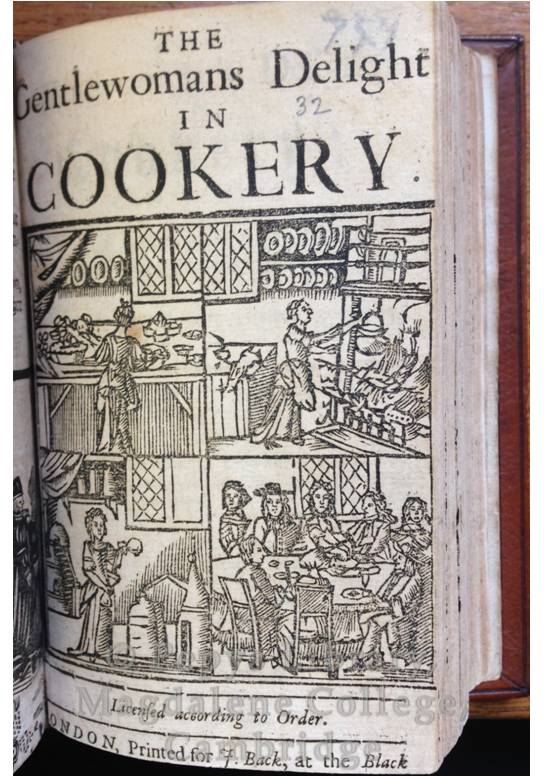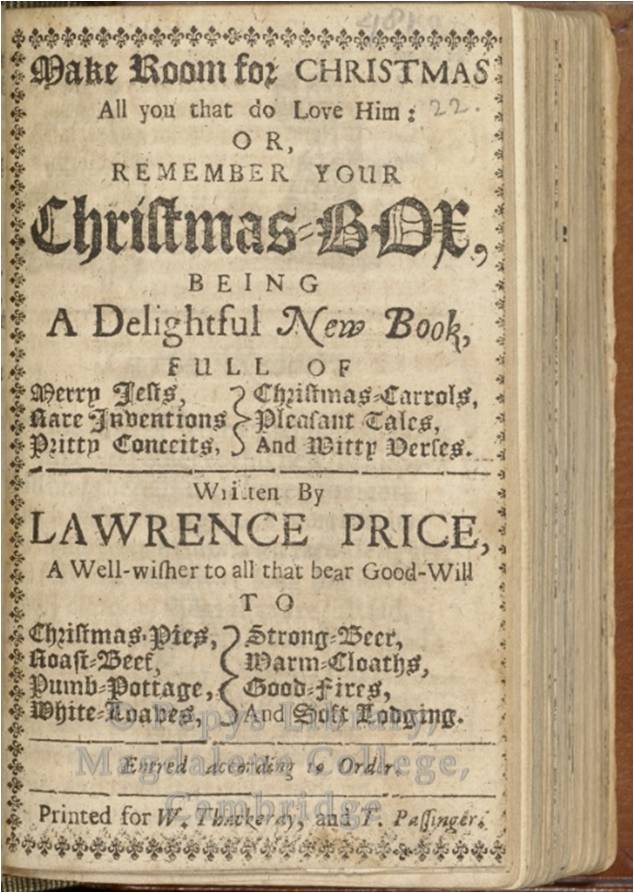Pepys was a collector of chapbooks: cheap publications printed with poor quality paper and type, usually folded and cut from a single sheet of paper to make books from 8 to 24 pages long. The several foldings of the paper needed to make the books resulted in chapbooks being fairly small (around 14 cm tall) so they were a portable, inexpensive form of entertainment. Roger Thompson has described the chapbook as ‘a vivid and invaluable source of popular culture for historians: a rare window on the minds of ordinary people.’ Few survive today due to their fragile nature, and they were often repurposed straight after they were read, for example being used to wrap food for baking. However, Pepys’ efforts have ensured the Pepys Library’s collection is regarded as one of the principal collections in the world, and many of the chapbooks here are unique. Pepys had his collection bound together into sets defined by genre (‘Penny Merriments’, ‘Penny Godlinesses’, ‘Penny Witticisms’ and ‘Vulgaria’).

PL 363(32) ‘The gentlewoman’s delight in cookery’ [London] : Printed for J. Back, on London-Bridge, [1690?]

PL 363(32) ‘The gentlewoman’s delight in cookery’ [London] : Printed for J. Back, on London-Bridge, [1690?]
With Christmas approaching, it is appropriate to feature a chapbook with a festive theme: Lawrence Price’s ‘Make room for Christmas’ printed in c.1686. Again, this is a unique item in the Pepys Library’s collection and it tells us much of how Christmas was celebrated well into the Restoration period. As one can see, roast beef seems to be preferred over turkey, however ‘Christmas Carrols’, ‘Good Fires’ and ‘Strong Beer’ would seem to resonate with us today!

PL 363(22) Price, Lawrence : ‘Make room for Christmas’. [London] : Printed for W[illiam]. Thackeray, and T[homas]. Passinger, [between 1686 and 1688]
Deputy Librarian, Pepys Library and Special Collections
References
Anon, 1690? The gentlewoman’s delight in cookery [London] : Printed for J. Back, on London-Bridge.
Price, Lawrence, between 1686 and 1688. Make room for Christmas [London] : Printed for W[illiam]. Thackeray, and T[homas]. Passinger.
Thompson, R. (Ed.), 1976. Samuel Pepys’ Penny merriments: being a collection of chapbooks, full of histories, jests, magic, amorous tales of courtship, marriage and infidelity, accounts of rogues and fools, together with comments on the times. London : Constable.
Victoria and Albert Museum, O.M., 2012. Chapbooks [WWW Document]. URL http://www.vam.ac.uk/content/articles/n/national-art-library-chapbooks-collection/ (accessed 8.26.14).
Pingback: Courtship with the Ferrars – Magdalene College Libraries